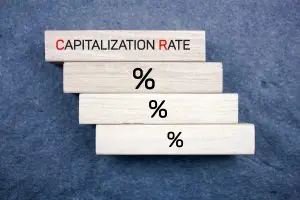Hi everyone! Welcome back to [Your Channel Name], where we explore innovative strategies for investing in small to medium real estate properties. Today, we’re diving into a crucial aspect of real estate investing: Exit Strategies—specifically, when and how to sell or refinance your properties. Whether you’re aiming for quick profits or long-term wealth, having a solid exit plan is essential. Let’s get started!
What Are Exit Strategies?
First, what exactly are exit strategies? Simply put, they are your plans for eventually converting your property investment into cash or realizing your profit. Think of them as your roadmap for determining when to sell, refinance, or explore other options to maximize your returns and minimize risks. Planning your exit quietly can make a significant difference in achieving your financial goals.
Common Exit Strategies
The two most common exit strategies are selling the property and refinancing. Let’s look at each:
Selling the Property. You might choose to sell when the property has appreciated, or when your investment goals are met. This could be flipping a property quickly for a profit or holding it long-term to generate rental income before selling.
It may be time to sell when an investment has not lived up to your original goals. The decision largely depends on a comparison of the expected returns of investment alternatives. What is the expected return on the investment compared to the expected return from replacing the asset?
On the other hand, if market conditions aren’t ideal or your property hasn’t reached its full potential, you might decide to hold and explore refinancing. Each strategy has its own considerations, and the right choice often depends on your personal goals, the property’s performance, and the current real estate climate.
Let’s break down the basics of refinancing before we get into deciding which route is best for you.
Refinancing. Refinancing involves replacing your current mortgage with a new one, often with better terms or to pull out equity. This can provide cash for new investments or reduce your monthly payments, increasing cash flow.
Other options, such as 1031 exchanges, lease options, or seller financing, can also be part of your exit toolkit, but we’ll focus on selling or refinancing today.
When to Sell or Refinance.
Timing is everything. Here are some key factors to consider:
- Market Conditions: Is property demand rising? Are interest rates favorable? Selling during a seller’s market can net you higher profits.
- Property-Specific Factors: Has your property appreciated significantly? Is your cash flow negative or positive? Does it need significant repairs?
- Personal Circumstances: Do you need access to liquidity? Are you looking to diversify your portfolio? Tax implications can also influence your decision.
- Pay attention to these indicators to know when it’s the right time to sell or refinance.

How to Decide Between Selling and Refinancing.
Deciding whether to sell or refinance needs careful analysis. Ask yourself:
- Are you aiming for quick profits or long-term cash flow?
- Will refinancing free up capital for other investments?
- Is the market currently favorable for selling?
- Remember that your analysis needs to be a projection of future returns…it is not a study of history.
Again, the best advice that I can give to investors is to prepare a detailed analysis of each alternative. Calculate the potential gains. Utilize metrics such as ROI, cash-on-cash return, and equity buildup. Also, consider tax implications—sometimes, refinancing can defer taxes, while selling might trigger capital gains.
Steps to Execute a Sale or Refinance
Once you’ve chosen your strategy, here are the steps to consider:
For selling:
- Prepare your property: Clean, repair, and stage it for showings.
- Get a professional appraisal or market analysis.
- Find a reliable real estate agent.
- Price it right and negotiate your sale.
For refinancing:
- Gather your financial documents.
- Shop around for the best loan terms.
- Get an appraisal to determine current value.
- Work with lenders to complete the process.
Timing and preparation are key to a smooth transaction.
Tips for a Successful Exit
A few tips to ensure success:
- Stay informed about market trends.
- Work with experienced professionals—agents, brokers, lenders.
- Plan your exit early—don’t wait until the last minute.
- Keep your finances well-organized and transparent.
Remember, a well-planned exit can make all the difference in your investment journey.
Conclusion
To conclude, having a clear exit strategy is crucial for maximizing your real estate investments. Whether you decide to sell or refinance, understanding when and how to do it will help you reach your financial goals faster and more efficiently.
Thanks for reading! If you found this article helpful, please like, comment with any questions, and subscribe for more real estate investing tips. Until next time, happy investing!
Do you have an exit strategy in mind for your investments? Share your thoughts or questions in the comments below—I’d love to hear from you!
Is there a specific real estate topic you’d like me to cover? Let me know in the comments or send me a message. I read all your feedback!






